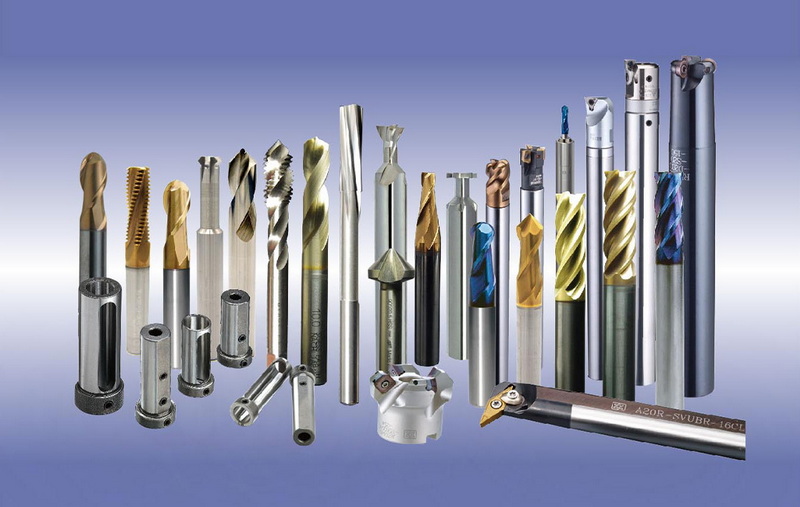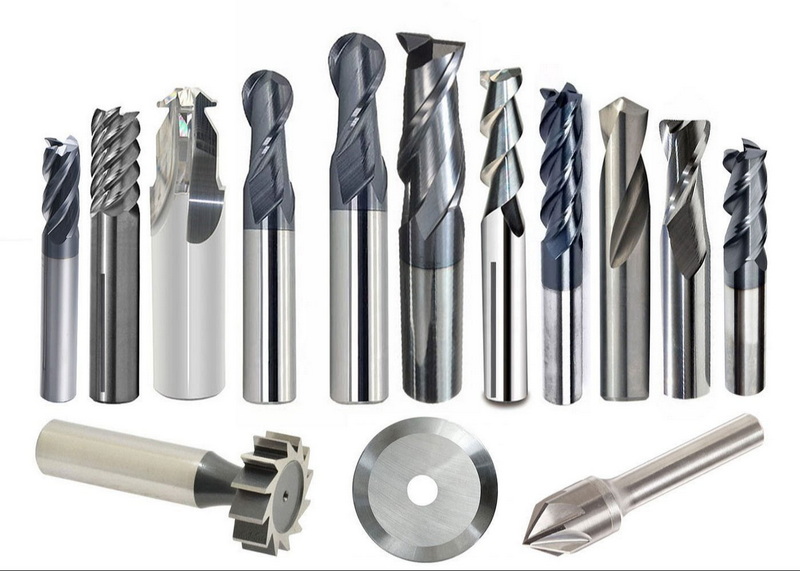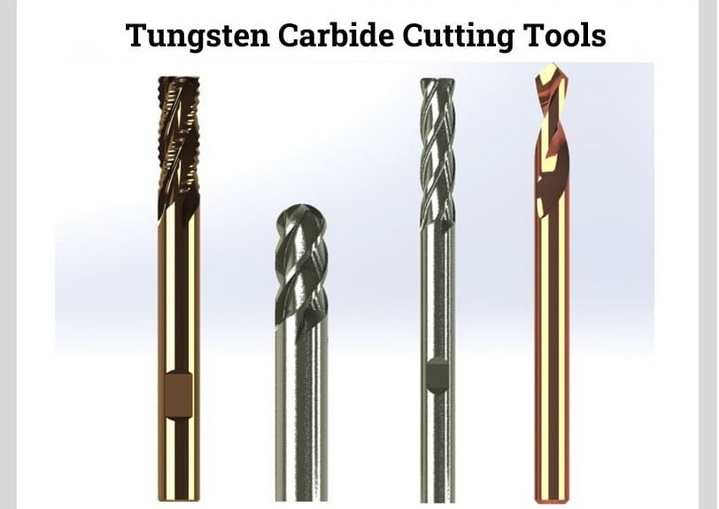Content Menu
● Introduction to Tungsten Carbide
>> Properties of Tungsten Carbide
● Applications of Tungsten Carbide Cutting Tools
>> Metalworking
>> Woodworking
>> Construction
● Types of Materials Cut by Tungsten Carbide
● History and Development of Tungsten Carbide
>> Key Milestones
● Comparison with Other Cutting Materials
● Innovations in Tungsten Carbide Tools
>> Coating Technologies
>> New Grades of Tungsten Carbide
● Environmental Impact and Sustainability
>> Sustainable Practices
● Future Trends in Tungsten Carbide Cutting Tools
>> Nanotechnology Advancements
● Customization and Special Applications
● Safety Precautions
● Conclusion
● FAQs
>> 1. What is Tungsten Carbide?
>> 2. What are the Primary Applications of Tungsten Carbide?
>> 3. How is Tungsten Carbide Manufactured?
>> 4. What are the Benefits of Using Tungsten Carbide Tools?
>> 5. Can Tungsten Carbide Tools be Used in Wet Environments?
● Citations:
Tungsten carbide is renowned for its exceptional hardness and durability, making it a versatile material used in various cutting tools across different industries. Its ability to withstand high temperatures and maintain sharpness under demanding conditions has made it a preferred choice for cutting a wide range of materials, from metals to wood and plastics. In this article, we will explore the capabilities of tungsten carbide cutting tools, their applications, and the types of materials they can effectively cut.

Introduction to Tungsten Carbide
Tungsten carbide is a compound made from tungsten and carbon, often combined with a metallic binder like cobalt to enhance its toughness and durability. This material is significantly harder than regular steel, with a hardness rating between 8.5 to 9.5 on the Mohs scale, making it ideal for high-speed machining and cutting applications.
Properties of Tungsten Carbide
- Hardness and Durability: Tungsten carbide is extremely hard and resistant to wear, allowing it to maintain its cutting edge even under high-speed and high-temperature conditions.
- Thermal Conductivity: It has good thermal conductivity, which helps in dissipating heat generated during cutting, thus maintaining tool integrity.
- Versatility: Tungsten carbide tools are used in various industries, including metalworking, woodworking, and construction.
Applications of Tungsten Carbide Cutting Tools
Tungsten carbide cutting tools are widely used in several industries due to their superior performance and longevity.
Metalworking
In metalworking, tungsten carbide tools are used for milling, drilling, turning, and reaming operations. They are capable of cutting through hard metals like steel, titanium, and cast iron with precision and efficiency.
Milling: Carbide end mills are commonly used for milling operations, providing smooth and accurate finishes on materials such as aluminum, steel, and titanium.
Drilling: Tungsten carbide drills are essential for creating holes in metals, capable of withstanding high temperatures and speeds.
Turning: Carbide inserts are used in turning operations to remove material from rotating workpieces, handling high temperatures and speeds effectively.
Reaming: Carbide reamers are used to enlarge and finish existing holes, providing a smooth finish and tight tolerances.
Woodworking
In woodworking, tungsten carbide cutters are used in tools like saw blades, planer knives, and router bits. They provide clean cuts and extend the life of woodworking tools by reducing the need for frequent sharpening.
Construction
Tungsten carbide bits are used in construction for drilling through concrete, masonry, and other hard materials. They are durable and can withstand the high pressures involved in these applications.

Types of Materials Cut by Tungsten Carbide
Tungsten carbide cutting tools can effectively cut a variety of materials, including:
- Metals: Steel, aluminum, titanium, cast iron, and stainless steel.
- Wood: Hardwoods and softwoods, providing clean cuts and minimizing splintering.
- Plastics: Various types of plastics, including hard and soft materials.
- Concrete and Masonry: Used in construction for drilling through tough surfaces.
History and Development of Tungsten Carbide
The development of tungsten carbide dates back to the early 20th century when it was first synthesized. Initially, it was used in wear parts and later evolved into cutting tools due to its exceptional hardness and durability. Over the years, advancements in manufacturing processes have improved the quality and consistency of tungsten carbide, making it a staple in modern machining.
Key Milestones
- Early Synthesis: Tungsten carbide was first synthesized in the early 20th century.
- Industrial Applications: It began being used in industrial applications, initially for wear parts.
- Advancements in Manufacturing: Improved manufacturing techniques enhanced its quality and consistency for cutting tools.
Comparison with Other Cutting Materials
Tungsten carbide is often compared with other cutting materials like high-speed steel (HSS), ceramic, and diamond-coated tools. While HSS tools are less expensive and suitable for low-speed operations, ceramic tools offer high wear resistance but are brittle. Diamond-coated tools provide excellent hardness but are more expensive and used for specialized applications.
| Material | Hardness | Wear Resistance | Cost | Application |
| Tungsten Carbide | Very High | Excellent | Moderate | High-speed machining |
| High-Speed Steel | Moderate | Fair | Low | Low-speed operations |
| Ceramic | High | Excellent | Moderate | High-wear applications |
| Diamond-Coated | Extremely High | Excellent | High | Specialized operations |
Innovations in Tungsten Carbide Tools
Recent innovations in tungsten carbide tools include advancements in coating technologies, such as titanium nitride (TiN) and aluminum oxide (Al2O3), which enhance wear resistance and reduce friction. Additionally, the development of new grades of tungsten carbide with improved toughness and hardness has expanded its application range.
Coating Technologies
- TiN Coating: Improves wear resistance and reduces friction.
- Al2O3 Coating: Provides additional wear protection in high-temperature applications.
New Grades of Tungsten Carbide
- Improved Toughness: New grades offer enhanced toughness for demanding applications.
- Increased Hardness: Higher hardness grades are available for cutting harder materials.
Environmental Impact and Sustainability
The environmental impact of tungsten carbide cutting tools is generally considered low compared to other materials. However, the mining of tungsten can have environmental concerns, such as deforestation and water pollution. Efforts towards sustainable practices, like recycling tungsten carbide tools and improving manufacturing efficiency, are becoming more prevalent.
Sustainable Practices
- Recycling: Recycling tungsten carbide tools reduces waste and conserves resources.
- Efficient Manufacturing: Improving manufacturing processes reduces energy consumption and waste generation.
Future Trends in Tungsten Carbide Cutting Tools
Future trends in tungsten carbide cutting tools include advancements in nanotechnology, which could further enhance hardness and wear resistance. Additionally, there is a growing focus on developing more sustainable manufacturing processes and reducing the environmental footprint of tungsten carbide production.
Nanotechnology Advancements
- Enhanced Hardness: Potential for even higher hardness through nanotechnology.
- Improved Sustainability: Focus on sustainable production methods to reduce environmental impact.
Customization and Special Applications
Tungsten carbide tools can be customized for specific applications, such as metal forming, stamping, and oil and gas drilling. Customization may involve tool geometries, grades, coatings, and cutting parameters to optimize performance for particular tasks.
Safety Precautions
When working with tungsten carbide cutting tools, it is essential to follow safety guidelines:
- Protective Gear: Wear safety glasses, gloves, and a dust mask to protect against flying debris and hazardous particles.
- Tool Maintenance: Regularly inspect and maintain tools to prevent wear and ensure optimal performance.
Conclusion
Tungsten carbide cutting tools are indispensable in various industries due to their exceptional hardness, durability, and versatility. They can effectively cut through a wide range of materials, from metals to wood and plastics, making them a preferred choice for high-speed machining and demanding applications.

FAQs
1. What is Tungsten Carbide?
Tungsten carbide is a hard, dense compound made from tungsten and carbon, often combined with a metallic binder like cobalt. It is renowned for its exceptional hardness and durability, making it ideal for cutting tools.
2. What are the Primary Applications of Tungsten Carbide?
Tungsten carbide is primarily used in cutting tools for metalworking, woodworking, and construction. It is also used in wear parts and injection molding tools due to its high wear resistance and durability.
3. How is Tungsten Carbide Manufactured?
Tungsten carbide is manufactured by heating tungsten powder with carbon at high temperatures, resulting in a dense, hard material. A metallic binder is often added to enhance toughness.
4. What are the Benefits of Using Tungsten Carbide Tools?
The benefits include superior hardness, high wear resistance, extended tool life, and the ability to withstand high temperatures, making them ideal for high-speed machining applications.
5. Can Tungsten Carbide Tools be Used in Wet Environments?
Yes, tungsten carbide tools can be used in wet environments, but proper maintenance is crucial to prevent corrosion and ensure longevity.
Citations:
[1] https://www.gwstoolgroup.com/understanding-the-different-types-of-carbide-in-cutting-tools/
[2] https://mkube.com.au/product/tungsten-carbide-customization-applications/
[3] https://www.timbecon.com.au/collections/replacement-carbide-cutters
[4] https://www.alamy.com/stock-photo/tungsten-carbide.html
[5] https://shop.machinemfg.com/how-to-cut-tungsten-carbide-rods-an-overview/
[6] https://www.sollex.se/en/blog/post/about-cemented-tungsten-carbide-applications-part-1
[7] https://epictool.ca/carbide-cutting-tools-the-most-common-uses-for-carbide/
[8] https://www.dremel.com/au/en/p/dremel-max-life-9901-tungsten-carbide-cutter-26159901ha
[9] https://www.alamy.com/stock-photo/tungsten-carbide-tool.html
[10] https://www.retopz.com/57-frequently-asked-questions-faqs-about-tungsten-carbide/
[11] https://www.repurvis.com/articles/tungsten-carbide-bits-explained
[12] https://eternaltools.com/blogs/tutorials/tungsten-carbide-an-informative-guide
[13] https://eurobalt.net/blog/2022/03/28/all-the-applications-of-tungsten-carbide/
[14] https://en.wikipedia.org/wiki/Tungsten_carbide
[15] https://www.tungco.com/insights/blog/5-tungsten-carbide-applications/
[16] https://www.carbitool.com.au/product/tungsten-carbide-cutters/
[17] https://huanatools.com/6-facts-about-tungsten-carbide-burrs-and-how-to-use-them/
[18] https://www.allied-material.co.jp/en/techinfo/tungsten_carbide/use.html
[19] https://www.carbatec.com.au/carbatec-tungsten-carbide-tip-4pc-large-woodturning-set
[20] https://www.reddit.com/r/metalworking/comments/cmjweu/can_tungsten_carbide_or_diamond_grit_cutting/
[21] https://primatooling.co.uk/benefits-of-tungsten-carbide-tooling/
[22] https://www.betalentcarbide.com/products/carbide-cutting-tools/
[23] https://www.carbidecomponents.com/news/tungsten-carbide-cutting-tools.html
[24] https://infinitytools.com/blogs/blog/carbide-101
[25] https://www.shutterstock.com/search/%22tungsten-carbide%22?page=3
[26] https://www.shutterstock.com/search/carbide-cutting-tools
[27] https://www.gettyimages.com.au/photos/tungsten-carbide
[28] https://www.istockphoto.com/photos/tungsten-carbide
[29] https://stock.adobe.com/search?k=tungsten+carbide
[30] https://www.istockphoto.com/photos/tungsten-carbide-drill-bits
[31] https://stock.adobe.com/search/images?k=carbide+cutting
[32] https://www.shutterstock.com/search/tungsten-carbide
[33] https://www.shutterstock.com/search/solid-tungsten-carbide
[34] https://tungstenandtool.com/blogs/news/industrial-cutting-tool-sharpening-4-common-questions-answered
[35] https://www.empireabrasives.com/blog/guide-troubleshooting-tungsten-carbide-burrs-issues-solutions/
[36] https://www.yatechmaterials.com/en/cemented-carbide-industry/answers-to-questions-about-the-use-of-tungsten-carbide-edm-blocks/
[37] https://carbidetools.nz/faqs/
[38] https://www.bladeforums.com/threads/tungsten-carbide-question.524307/
[39] https://ssendmill.com/tungsten-carbide-end-mill/
[40] https://abrasive-systems.co.uk/tungsten-carbide-burrs/recommended-speed-for-tungsten-carbide-burrs
[41] https://www.carbide-part.com/blog/how-to-cut-carbide/
[42] https://echidna.com.au/KnowledgeCorner/FAQs.php?FAQ=1
[43] https://fmcarbide.com/blogs/techtalks/carbide-tool-services-the-most-common-uses-for-carbide
[44] https://shop.machinemfg.com/the-pros-and-cons-of-tungsten-carbide-a-comprehensive-guide/
[45] https://duragrit.com/faq/
[46] https://www.lindstromtools.com/int_en/tungsten-carbide-cutter/
[47] https://create.vista.com/photos/tungsten-carbide/
[48] https://www.sanfoundry.com/manufacturing-engineering-questions-answers-cutting-tool-material-1/
[49] https://www.yatechmaterials.com/en/technology/methods-of-machining-tungsten-carbide/
















